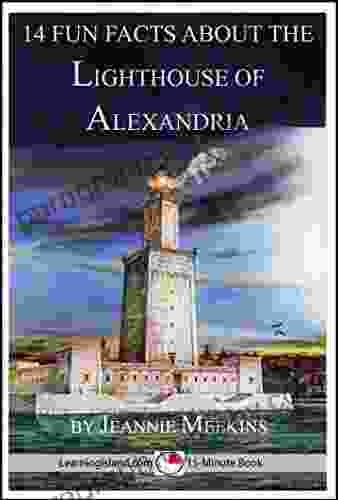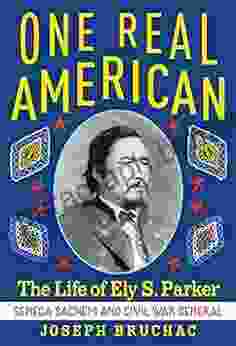14 Fun Facts About the Lighthouse of Alexandria: Illuminating History

The Lighthouse of Alexandria, also known as the Pharos of Alexandria, was an ancient marvel that stood as one of the Seven Wonders of the World. Built on the island of Pharos off the coast of Alexandria, Egypt, this magnificent structure guided ships safely into the harbor for over 1,600 years.
5 out of 5
| Language | : | English |
| File size | : | 1875 KB |
| Text-to-Speech | : | Enabled |
| Screen Reader | : | Supported |
| Enhanced typesetting | : | Enabled |
| Word Wise | : | Enabled |
| Print length | : | 35 pages |
| Lending | : | Enabled |
Below are 14 intriguing facts that shed light on the history, design, and legacy of this iconic landmark:
1. Its Construction Was Commissioned by Alexander the Great
The Lighthouse of Alexandria was built during the reign of Ptolemy I, one of Alexander the Great's generals who became the ruler of Egypt after his death. Construction began around 299 BC and took approximately 12 years to complete.
2. Sostratus of Cnidus Was Its Architect
The architect responsible for designing the Lighthouse of Alexandria was Sostratus of Cnidus. To commemorate his achievement, Sostratus carved his name into the base of the lighthouse along with the following inscription: "Sostratus of Cnidus, son of Dexiphanes, dedicated this to the Savior Gods for the benefit of seafarers."
3. It Was Built on the Island of Pharos
The Lighthouse of Alexandria was constructed on the small island of Pharos, located about 1.6 kilometers (1 mile) off the coast of Alexandria. The island provided a strategic location for the lighthouse, as it allowed for a clear view of approaching ships from both the Mediterranean Sea and the Canopic branch of the Nile River.
4. It Was One of the Tallest Structures in the Ancient World
The Lighthouse of Alexandria stood at an impressive height of approximately 115-160 meters (377-525 feet),making it one of the tallest structures in the ancient world. Its height was comparable to a 40-story modern building.
5. It Had Three Main Sections
The Lighthouse of Alexandria consisted of three main sections:
- A square base that served as a foundation and contained storage rooms and living quarters. - An octagonal middle section that housed a large burning chamber where the fire was kept. - A circular upper section that served as a lantern room and was topped by a large bronze statue of Poseidon, the Greek god of the sea.
6. It Used a Clever System of Mirrors to Amplify Light
The Lighthouse of Alexandria did not use lenses, as no suitable technology existed at the time. Instead, it employed a sophisticated system of bronze mirrors arranged in parabolic reflectors to intensify and direct the light from the fire. This allowed the lighthouse's beam to be visible from a great distance.
7. It Had a Range of Over 50 Kilometers
The Lighthouse of Alexandria's powerful beam had a range of approximately 56 kilometers (35 miles),making it visible from ships approaching Alexandria from afar. The light aided sailors in navigating the treacherous waters around the Pharos island and the entrance to the harbor.
8. It Required a Team of Men to Keep the Fire Burning
Keeping the fire in the lighthouse's burning chamber alight was a demanding task. It required a team of men who worked in shifts to constantly feed the fire with fuel. The fuel used was a combination of wood and oil, which produced a bright and steady flame.
9. It Featured a Ramp for Supplies and Personnel
Inside the Lighthouse of Alexandria, a spiral ramp extended from the base to the top of the structure. This ramp allowed donkeys or other animals to transport supplies and personnel to the different levels of the lighthouse, facilitating the maintenance and operation of the structure.
10. It Was Destroyed by Earthquakes
Over the centuries, the Lighthouse of Alexandria underwent several renovations and repairs. However, it was eventually destroyed by a series of powerful earthquakes that occurred between the 10th and 13th centuries. The ruins of the lighthouse remained visible above the waterline until the 15th century, but eventually, most of the structure sank beneath the waves.
11. Its Ruins Were Used as a Fort
After the Lighthouse of Alexandria collapsed, its ruins were used as the foundation for a defensive fort called Fort Qaitbey. Built by the Mamluk Sultan Qaitbey in the 15th century, the fort still stands today and serves as a popular tourist attraction.
12. It Inspired Many Later Structures
The Lighthouse of Alexandria became a model for many subsequent lighthouses built around the world. Its design and techniques influenced the construction of lighthouses throughout the Mediterranean region and beyond.
13. It Remains an Icon of Ancient Engineering
Despite its destruction, the Lighthouse of Alexandria continues to be recognized as one of the greatest feats of ancient engineering. It represents the ingenuity and architectural prowess of the ancient world and serves as a reminder of the importance of maritime commerce and navigation in the development of civilizations.
14. Its Legacy Lives On
The Lighthouse of Alexandria may be gone, but its legacy lives on in the many lighthouses that have been built since its time. Lighthouses continue to play a vital role in safeguarding ships and sailors, providing a beacon of hope and safety at sea.
The Lighthouse of Alexandria was a magnificent structure that illuminated the ancient world for centuries. Its fascinating history, innovative design, and significant legacy make it an enduring symbol of human achievement and the pursuit of maritime exploration. The 14 facts presented in this article provide a glimpse into the grandeur and importance of this ancient marvel.
5 out of 5
| Language | : | English |
| File size | : | 1875 KB |
| Text-to-Speech | : | Enabled |
| Screen Reader | : | Supported |
| Enhanced typesetting | : | Enabled |
| Word Wise | : | Enabled |
| Print length | : | 35 pages |
| Lending | : | Enabled |
Do you want to contribute by writing guest posts on this blog?
Please contact us and send us a resume of previous articles that you have written.
 Book
Book Novel
Novel Page
Page Chapter
Chapter Text
Text Story
Story Genre
Genre Reader
Reader Library
Library Paperback
Paperback E-book
E-book Magazine
Magazine Newspaper
Newspaper Paragraph
Paragraph Sentence
Sentence Bookmark
Bookmark Shelf
Shelf Glossary
Glossary Bibliography
Bibliography Foreword
Foreword Preface
Preface Synopsis
Synopsis Annotation
Annotation Footnote
Footnote Manuscript
Manuscript Scroll
Scroll Codex
Codex Tome
Tome Bestseller
Bestseller Classics
Classics Library card
Library card Narrative
Narrative Biography
Biography Autobiography
Autobiography Memoir
Memoir Reference
Reference Encyclopedia
Encyclopedia Sally Black
Sally Black Wendy M Reinke
Wendy M Reinke The Group Of 33
The Group Of 33 Jennifer T Campbell
Jennifer T Campbell Jonathan Walker
Jonathan Walker Mark Hillary
Mark Hillary Melyssa St Michael
Melyssa St Michael Jean Sagendorph
Jean Sagendorph Junheng Li
Junheng Li Sue Campbell
Sue Campbell Jeff Kinney
Jeff Kinney Jenna Helwig
Jenna Helwig Steve Pemberton
Steve Pemberton Kate Haxell
Kate Haxell Play Life Academy
Play Life Academy Jeff Lestz
Jeff Lestz Nicole Mones
Nicole Mones Jeffry A Frieden
Jeffry A Frieden Jessica S Olson
Jessica S Olson Ron Fry
Ron Fry
Light bulbAdvertise smarter! Our strategic ad space ensures maximum exposure. Reserve your spot today!
 Elliott CarterFollow ·8.3k
Elliott CarterFollow ·8.3k Gus HayesFollow ·19.4k
Gus HayesFollow ·19.4k Clay PowellFollow ·7k
Clay PowellFollow ·7k Jack PowellFollow ·13.4k
Jack PowellFollow ·13.4k Marcus BellFollow ·15.7k
Marcus BellFollow ·15.7k Robert HeinleinFollow ·2.2k
Robert HeinleinFollow ·2.2k Jorge Luis BorgesFollow ·4.5k
Jorge Luis BorgesFollow ·4.5k Cortez ReedFollow ·6.5k
Cortez ReedFollow ·6.5k

 Jeremy Mitchell
Jeremy MitchellUnveiling the Truth: The Captivating Saga of The Elephant...
Embark on a poignant journey through the...

 Marvin Hayes
Marvin HayesThe Day The World Came To Town: A Heartwarming Tale of a...
In the quaint...

 Hugh Bell
Hugh BellExplore the Avian Treasures of Wisconsin: A Review of...
Unveiling the Secrets of...
5 out of 5
| Language | : | English |
| File size | : | 1875 KB |
| Text-to-Speech | : | Enabled |
| Screen Reader | : | Supported |
| Enhanced typesetting | : | Enabled |
| Word Wise | : | Enabled |
| Print length | : | 35 pages |
| Lending | : | Enabled |

















